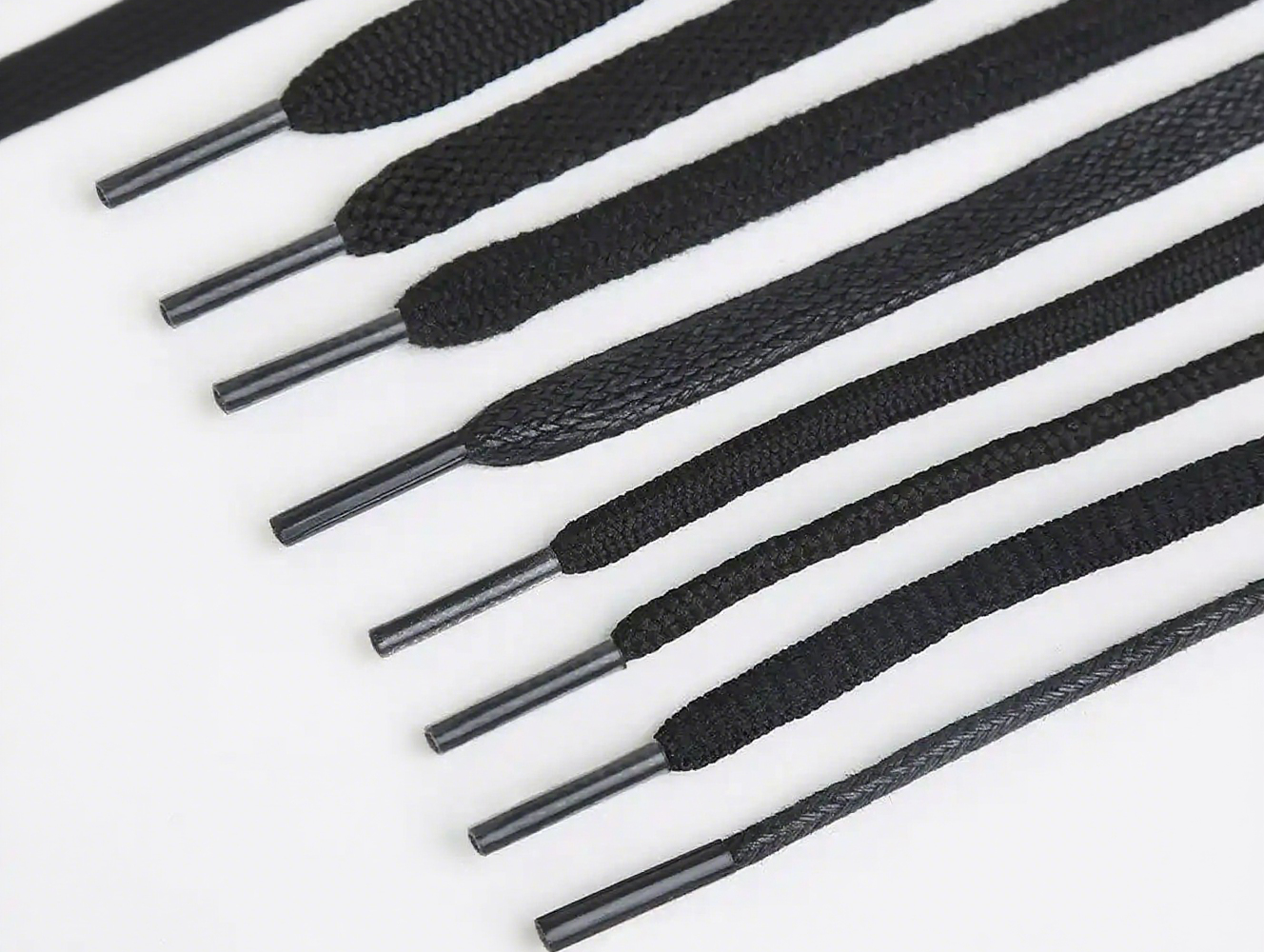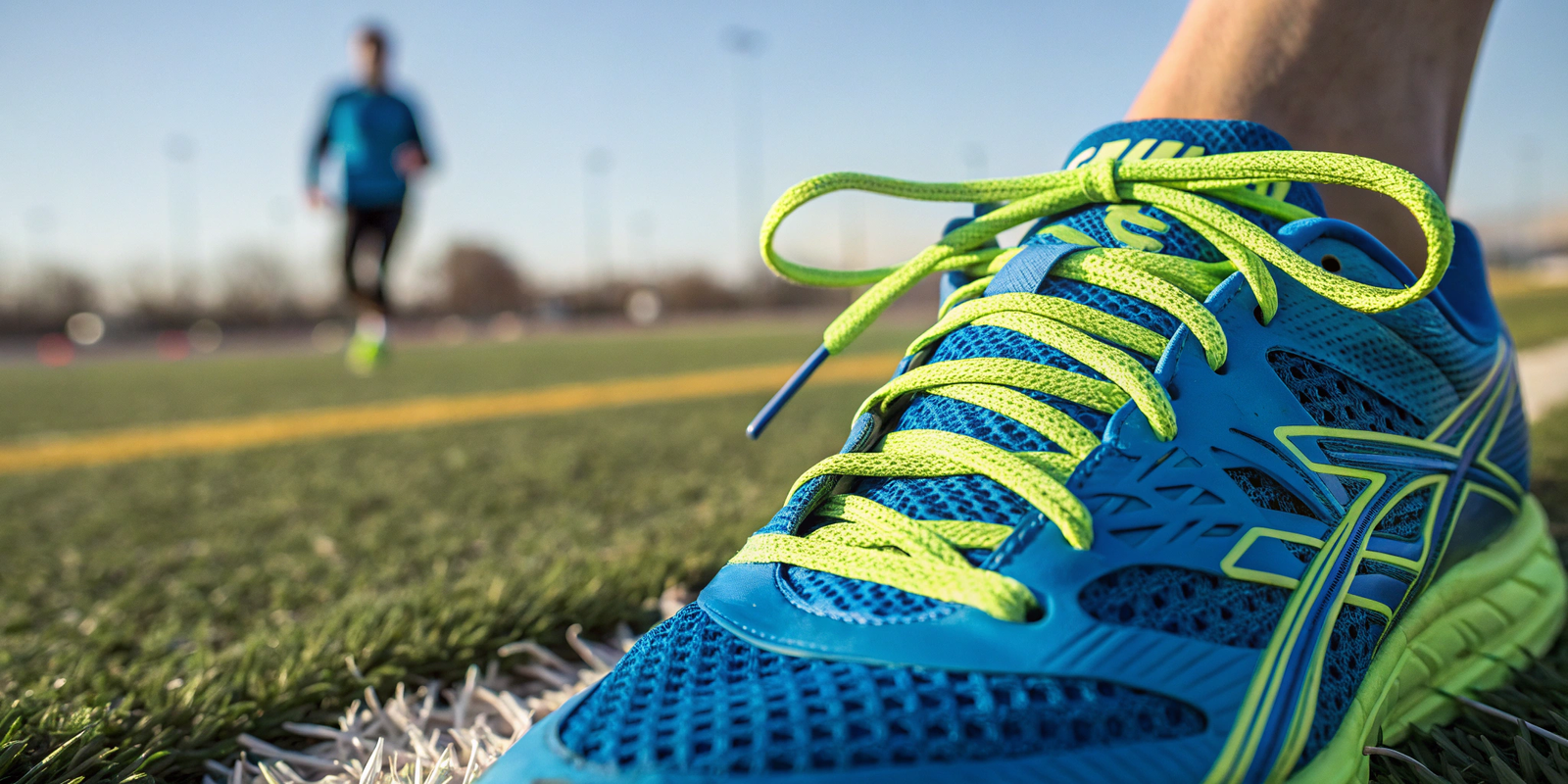Are you looking for ways to refresh your shoes' look or improve their fit? Different lacing patterns can make a huge difference.
Shoe lace patterns offer a surprising array of functions beyond just securing your footwear, from enhancing comfort and support for specific foot types to simply adding a touch of personal style. Varying your lacing can address pressure points, improve stability, or even make a fashion statement.
 Are there different types of shoelaces?
Are you curious about the variety of shoelaces available and how they differ? Beyond just color, there's quite a spectrum.
Yes, there are many different types of shoelaces, distinguished primarily by their material, shape, and elasticity. Common types include flat, round, oval, and elastic laces, made from materials like cotton, polyester, nylon, and sometimes waxed or reflective fibers, each offering unique properties for durability, grip, and aesthetic.
Are there different types of shoelaces?
Are you curious about the variety of shoelaces available and how they differ? Beyond just color, there's quite a spectrum.
Yes, there are many different types of shoelaces, distinguished primarily by their material, shape, and elasticity. Common types include flat, round, oval, and elastic laces, made from materials like cotton, polyester, nylon, and sometimes waxed or reflective fibers, each offering unique properties for durability, grip, and aesthetic.
In my years in the footwear industry, I've learned that even something as seemingly simple as a shoelace is engineered for a purpose. The choice of lace can impact how a shoe feels and performs. We ensure our shoes are complemented by high-quality laces, chosen to match the shoe's design and intended use.
Exploring the Diverse World of Shoelaces
The right shoelace can significantly enhance a shoe's function and appearance. Here's a breakdown of the main types:
- 1. Shape:
- Flat Laces: These are the most common type, often found on casual shoes, sneakers, and some dress shoes. Their flat, wide surface provides good grip, which helps them stay tied longer. They distribute pressure over a wider area, which can be more comfortable for some feet.
- Round Laces: Thinner and more cylindrical, round laces are frequently used on boots, dress shoes, and some athletic shoes. They offer a sleek, refined look but can be more prone to coming undone due due to their smoother surface, especially if made from slippery materials.
- Oval Laces: A hybrid between flat and round, oval laces offer a slightly wider surface than round laces, providing a bit more grip and comfort, commonly found on athletic and running shoes.
- 2. Material:
- Cotton: Often used for casual and dress shoes, cotton laces are soft, durable, and have a good grip. They tend to stretch a bit and can fray over time.
- Polyester: Very common for athletic shoes and sneakers due to its durability, resistance to stretching, and vibrant color retention. Polyester laces are often a bit slicker than cotton.
- Nylon: Known for its strength and elasticity, nylon laces are often found on hiking boots or work boots where ruggedness is required. They can be more prone to coming undone if not tied properly due to their smooth, somewhat stretchy nature.
- Waxed Cotton/Polyester: A wax coating adds water resistance and significantly increases friction, making them excellent for staying tied. They are popular on boots and some dress shoes.
- Reflective Laces: Incorporate reflective threads, ideal for increasing visibility during night-time running or walking.
- Elastic Laces: Designed to allow shoes to be slipped on and off without tying, providing a snug, comfortable fit. Popular for children's shoes, triathletes, and those with dexterity issues. Examples include Lock Laces or Hickies.
- 3. Special Features:
- No-Tie Laces: As mentioned with elastic laces, these systems use various mechanisms (e.g., elastic cords with toggles, silicone bands) to eliminate the need for traditional tying.
- Leather Laces: Seen on boat shoes, moccasins, or some casual boots, offering a rustic and durable aesthetic. They tend to be stiff initially and can be prone to drying out.
Understanding these types helps in choosing the right lace for a specific shoe, optimizing both function and fashion.
| Shoelace Type | Primary Characteristics | Common Applications | Pros | Cons |
|---|---|---|---|---|
| Flat | Wide, flat surface; often cotton or polyester. | Sneakers, casual shoes, some dress shoes. | Good grip, distributes pressure evenly. | Can appear bulky on narrow eyelets. |
| Round | Thin, cylindrical; often cotton, polyester, or nylon. | Dress shoes, boots, some athletic shoes. | Elegant, sleek look. | Can come undone more easily, higher pressure. |
| Oval | Hybrid, slightly wider than round; mostly polyester. | Running shoes, athletic trainers. | Good balance of grip and flexibility. | Less common for formal wear. |
| Elastic | Stretchy, often with toggles or silicone. | Children's shoes, athletic shoes (triathlon), casual. | No tying needed, easy slip-on/off. | Less traditional look, less precise fit control. |
| Waxed | Coated with wax; usually cotton or polyester. | Boots, dress shoes. | Excellent grip, stays tied, water-resistant. | Can be stiff, may leave residue. |
| Reflective | Incorporates reflective threads. | Running shoes, activewear. | Enhanced visibility in low light. | Can be less aesthetically versatile. |
How to keep shoes tied all day?
Are your shoelaces constantly coming undone, causing frustration? There are effective ways to secure them for good.
To keep shoes tied all day, use a stronger knot like a surgeon's knot, double knot your laces, ensure your laces are made from materials with good friction properties (like cotton or waxed laces), and consider specific lacing techniques that reduce slack and increase tension distribution across the shoe's eyelets.
 Having dealt with countless shoes, I know the annoyance of a constantly untied lace. It's not just an inconvenience; it can be a hazard. We always advise our customers on practices that ensure safety and comfort, and secure lacing is a big part of that.
Having dealt with countless shoes, I know the annoyance of a constantly untied lace. It's not just an inconvenience; it can be a hazard. We always advise our customers on practices that ensure safety and comfort, and secure lacing is a big part of that.
Practical Tips for Uninterrupted Secure Laces
A simple untied shoelace can disrupt your day. Here are proven methods to keep them fastened.
- 1. Use a Stronger Knot – The Surgeon's Knot:
- Instead of a simple square knot where you loop one side over and under the other just once, do it twice.
- Method: After forming the first half of your standard knot (left over right, then under), go around twice instead of once before pulling tight. Then, complete the second half of the knot as usual (right over left, then under) and again go around twice before pulling tight to form the loops.
- This extra pass creates more friction, making the knot much more secure and significantly less likely to loosen.
- 2. The Double Knot (Granny Knot):
- This is the most common and straightforward method. After tying your standard bow, simply tie another bow over the first one.
- Method: Tie your normal shoelace bow. Once the bow is formed, take the two loops and tie them together in another standard knot.
- While effective, it can sometimes be difficult to untie and can put extra stress on the laces, potentially causing them to break down faster. It's a quick fix but not always the most elegant or lace-friendly.
- 3. Choose the Right Laces:
- Material Matters: Laces made of cotton or those that are waxed (like waxed cotton or waxed polyester) tend to have more friction and grip, making them less prone to untying than smooth, slippery synthetic laces (like some nylons or highly polished polyesters).
- Shape: Flat or oval laces generally offer more surface area and thus more friction than thin, round laces, which are more likely to slip.
- 4. Correct Tensioning in Lacing:
- Ensure the laces are evenly tightened from the bottom eyelets all the way up. If the bottom section of your lacing is too loose, the top knot will have to bear more tension and is more likely to loosen.
- Method: When lacing up, pull the laces tight from the bottom eyelets first, and work your way up gradually, ensuring even tension throughout the entire lacing system. This distributes the pressure and helps the whole shoe feel more secure.
- 5. Consider Other Lacing Patterns:
- Some lacing patterns, like criss-cross over-under, straight lacing (fashion lacing), or even specific patterns for running shoes (which we'll discuss next) can help distribute pressure and keep laces more secure within the eyelets, reducing movement that can lead to untying.
By combining one or more of these techniques, you can significantly reduce the chances of your shoelaces coming undone during the day.
| Method | Description | Pros | Cons |
|---|---|---|---|
| Surgeon's Knot | Extra loop in the first and second half of the knot. | Very secure, highly effective. | Slightly more effort to tie. |
| Double Knot | Tying a second bow over the first. | Simple, very effective. | Can be hard to untie, may wear laces faster. |
| Lace Material/Shape Choice | Use cotton, waxed, flat, or oval laces. | Increased friction, less prone to slipping. | Requires specific lace types. |
| Proper Tensioning | Evenly tighten laces from bottom to top. | Improves overall fit, reduces knot strain. | Takes a moment longer to lace. |
| Specific Lacing Patterns | Certain patterns enhance grip within eyelets. | Optimized pressure distribution and security. | May not be suitable for all shoes/looks. |
Lacing Techniques for Runners?
Are you a runner experiencing discomfort or instability with standard lacing? Tailored lacing can solve common issues.
Runners can benefit from specific lacing techniques that alleviate pressure points, improve heel lock, or accommodate foot swelling. Common methods include straight lacing for pressure reduction, skip lacing for high insteps, and heel-lock lacing to prevent slippage, all designed to enhance comfort and performance over long distances.
 When we design performance footwear at Lucas, we understand that the fit is just as crucial as the shoe's construction. For runners, the right lacing technique can be a game-changer, turning a good run into a great one by providing customized support.
When we design performance footwear at Lucas, we understand that the fit is just as crucial as the shoe's construction. For runners, the right lacing technique can be a game-changer, turning a good run into a great one by providing customized support.
Customizing Lacing for Optimal Running Performance
Every runner's foot is unique, and standard lacing might not always provide the best fit. Here are techniques to address common running shoe fit issues:
- 1. Standard Criss-Cross Lacing (O/U – Over/Under):
- This is the most common method and works well for most runners. The laces cross over the tongue.
- Benefit: Provides a good, secure fit for average feet. Easy to adjust tension.
- Technique: Laces feed up and over the eyelets, crossing as they move up the shoe.
- 2. Straight Bar Lacing (Fashion/High Instep):
- The laces run straight across the shoe, parallel to each other, entering from the underside of the eyelets.
- Benefit: Reduces pressure on the top of the foot (instep), which is beneficial for runners with high arches or sensitive insteps. It can also look tidier.
- Technique: Laces run straight across on the outside and criss-cross under the eyelets on the inside.
- 3. Loop Lacing / "Runner's Knot" / "Heel Lock":
- This is an essential technique for preventing heel slippage, a common problem that can lead to blisters. Most running shoes have an extra eyelet near the ankle for this purpose.
- Benefit: Creates a tighter lock around the ankle, securing the heel in place and preventing it from lifting inside the shoe.
- Technique: Once you reach the second-to-last eyelet, thread the lace through the last eyelet on the same side from the outside, forming a small loop. Repeat on the other side. Then, cross the laces over and thread each lace through the opposite loop. Pull tightly to cinch the heel, and tie your knot.
- 4. Skip Lacing (High Instep/Pressure Points):
- If you have a particularly high instep or experience pressure on a specific part of your foot, you can skip an eyelet.
- Benefit: Alleviates pressure over a sensitive area.
- Technique: Start lacing normally. When you reach the eyelet (or pair of eyelets) that causes pressure, skip it. Continue lacing from the next available eyelet above or below it.
- 5. Window Lacing (Forefoot Hot Spots):
- Similar to skip lacing but creates a wider gap.
- Benefit: Ideal for forefoot pain or bunions, creating a "window" of space over a specific hot spot.
- Technique: When you reach the painful area, thread the lace straight up the side from one eyelet to the next without crossing over. Then, cross the laces over from the outside to the next eyelet and continue normal lacing.
Experimenting with these techniques can significantly improve comfort and performance, allowing you to focus on your run, not your feet.
| Lacing Technique | Common Problem Addressed | How It Works | Ideal For |
|---|---|---|---|
| Standard Criss-Cross | General fit. | Even tension distribution. | Most foot types, general running. |
| Straight Bar | High instep pressure, top-of-foot pain. | Laces run parallel, reducing pressure points. | High arches, sensitive insteps. |
| Heel Lock/Runner's Knot | Heel slippage, blisters. | Cinch around the ankle for a secure fit. | Preventing heel lift, blister prevention. |
| Skip Lacing | Localized pressure points, hot spots. | Omits crossing over specific sensitive areas. | High insteps, bony prominences, localized discomfort. |
| Window Lacing | Forefoot pain, bunions. | Creates a wider gap over painful areas. | Bunions, forefoot sensitivity. |
Conclusion Shoe laces vary by material, shape, and elasticity, impacting grip and appearance. To keep them tied, use a surgeon's knot, double knot, or choose high-friction laces with proper tension. Runners can customize lacing to enhance comfort, prevent slippage, and alleviate pressure points.
